
Georgia Totto O'Keeffe was an American modernist painter and draftswoman whose career spanned seven decades and whose work remained largely independent of major art movements. Called the "Mother of American modernism", O'Keeffe gained international recognition for her meticulous paintings of natural forms, particularly flowers and desert-inspired landscapes, which were often drawn from and related to places and environments in which she lived.

Charles Henry Buckius Demuth was an American painter who specialized in watercolors and turned to oils late in his career, developing a style of painting known as Precisionism.

Alfred Stieglitz was an American photographer and modern art promoter who was instrumental over his 50-year career in making photography an accepted art form. In addition to his photography, Stieglitz was known for the New York art galleries that he ran in the early part of the 20th century, where he introduced many avant-garde European artists to the U.S. He was married to painter Georgia O'Keeffe.

Precisionism was a modernist art movement that emerged in the United States after World War I. Influenced by Cubism, Purism, and Futurism, Precisionist artists reduced subjects to their essential geometric shapes, eliminated detail, and often used planes of light to create a sense of crisp focus and suggest the sleekness and sheen of machine forms. At the height of its popularity during the 1920s and early 1930s, Precisionism celebrated the new American landscape of skyscrapers, bridges, and factories in a form that has also been called "Cubist-Realism." The term "Precisionism" was first coined in the mid-1920s, possibly by Museum of Modern Art director Alfred H. Barr although according to Amy Dempsey the term "Precisionism" was coined by Charles Sheeler. Painters working in this style were also known as the "Immaculates", which was the more commonly used term at the time. The stiffness of both art-historical labels suggests the difficulties contemporary critics had in attempting to characterize these artists.

Max Weber was a Jewish-American painter and one of the first American Cubist painters who, in later life, turned to more figurative Jewish themes in his art. He is best known today for Chinese Restaurant (1915), in the collection of the Whitney Museum of American Art, "the finest canvas of his Cubist phase," in the words of art historian Avis Berman.
291 is the commonly known name for an internationally famous art gallery that was located in Midtown Manhattan at 291 Fifth Avenue in New York City from 1905 to 1917. Originally called the "Little Galleries of the Photo-Secession", the gallery was established and managed by photographer Alfred Stieglitz.

Marsden Hartley was an American Modernist painter, poet, and essayist. Hartley developed his painting abilities by observing Cubist artists in Paris and Berlin.
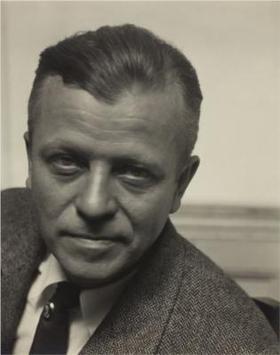
Arthur Garfield Dove was an American artist. An early American modernist, he is often considered the first American abstract painter. Dove used a wide range of media, sometimes in unconventional combinations, to produce his abstractions and his abstract landscapes. Me and the Moon from 1937 is a good example of an Arthur Dove abstract landscape and has been referred to as one of the culminating works of his career. Dove made a series of experimental collages in the 1920s. He also experimented with techniques, combining paints like hand mixed oil or tempera over a wax emulsion as exemplified in Dove's 1938 painting Tanks, in the collection of the Boston Museum of Fine Arts.

John Marin was an early American modernist artist. He is known for his abstract landscapes and watercolors.
American modernism, much like the modernism movement in general, is a trend of philosophical thought arising from the widespread changes in culture and society in the age of modernity. American modernism is an artistic and cultural movement in the United States beginning at the turn of the 20th century, with a core period between World War I and World War II. Like its European counterpart, American modernism stemmed from a rejection of Enlightenment thinking, seeking to better represent reality in a new, more industrialized world.

Henry McBride was an American art critic known for his support of modern artists, both European and American, in the first half of the twentieth century. As a writer during the 1920s for the newspaper The New York Sun and the avant-garde magazine The Dial, McBride became one of the most influential supporters of modern art in his time. He also wrote for Creative Art (1928-1932) and Art News (1950-1959). Living to be ninety-five, McBride was born in the era of Winslow Homer and the Hudson River School and lived to see the rise of Jackson Pollock, Mark Rothko, and the New York School.
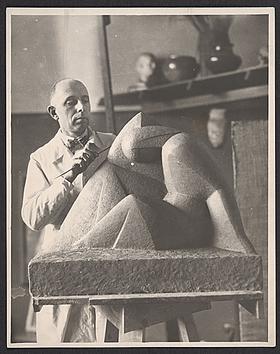
Arnold Rönnebeck was a German-born American modernist artist and museum administrator. He was a vital member of both the European and American avant-garde movements of the early twentieth century before settling in Denver, Colorado. Rönnebeck was a sculptor and painter, but is best known for his lithographs that featured a range of subjects including New York cityscapes, New Mexico and Colorado landscapes and Native American dances.

Todd Webb was an American photographer notable for documenting everyday life and architecture in cities such as New York City, Paris as well as from the American west. He traveled extensively during his long life and had important friendships with artists such as Berenice Abbott, Walker Evans, Alfred Stieglitz, Georgia O'Keeffe, Ansel Adams, Dorothea Lange, and Harry Callahan.
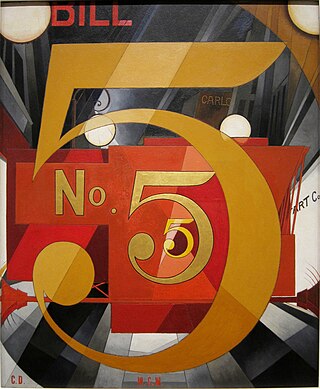
I Saw the Figure 5 in Gold, also known as The Figure 5 in Gold, is a 1928 painting by American artist Charles Demuth. It has been described as influenced by Futurism and Cubism.
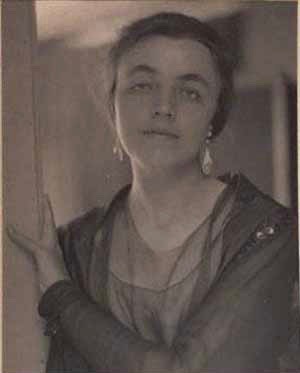
Katharine Nash Rhoades was an American painter, poet and illustrator born in New York City. She was also a feminist.

Marion Hasbrouck Beckett was an American painter.

Georgia O'Keeffe made a number of Red Canna paintings of the canna lily plant, first in watercolor, such as a red canna flower bouquet painted in 1915, but primarily abstract paintings of close-up images in oil. O'Keeffe said that she made the paintings to reflect the way she herself saw flowers, although others have called her depictions erotic, and compared them to female genitalia. O'Keeffe said they had misconstrued her intentions for doing her flower paintings: "Well – I made you take time to look at what I saw and when you took time to really notice my flower you hung all your own associations with flowers on my flower and you write about my flower as if I think and see what you think and see of the flower – and I don't."

Bermuda No. 2, The Schooner is an early 20th century drawing by American artist Charles Demuth. Done in watercolor and graphite on paper, the work depicts the ship Danish ship Elsa. The drawing is in the collection of the Metropolitan Museum of Art.

Sentimental Music is a circa 1913 painting by Arthur Dove. It is in the collection of the Metropolitan Museum of Art. It is not currently on display.
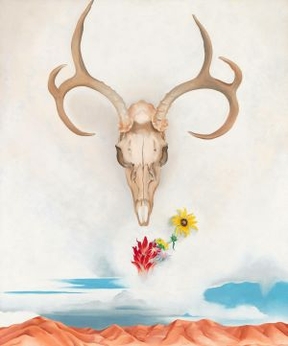
Summer Days is a 1936 oil painting by the American 20th-century artist Georgia O'Keeffe. It depicts a buck deer skull with large antlers juxtaposed with a vibrant assortment of wildflowers hovering below. The skull and flowers are suspended over a mountainous desert landscape occupying the lower part of the composition. Summer Days is among several landscape paintings featuring animal skulls and inspired by New Mexico desert O'Keeffe completed between 1934 and 1936.


















